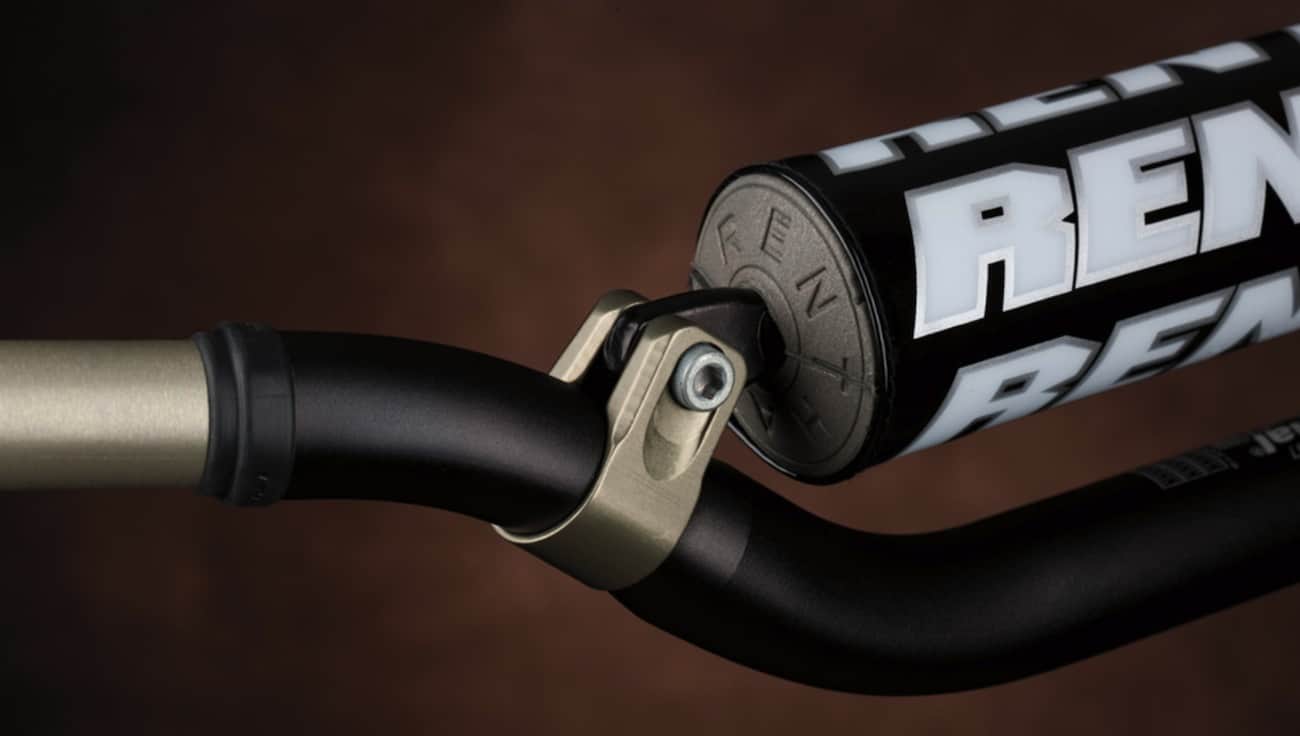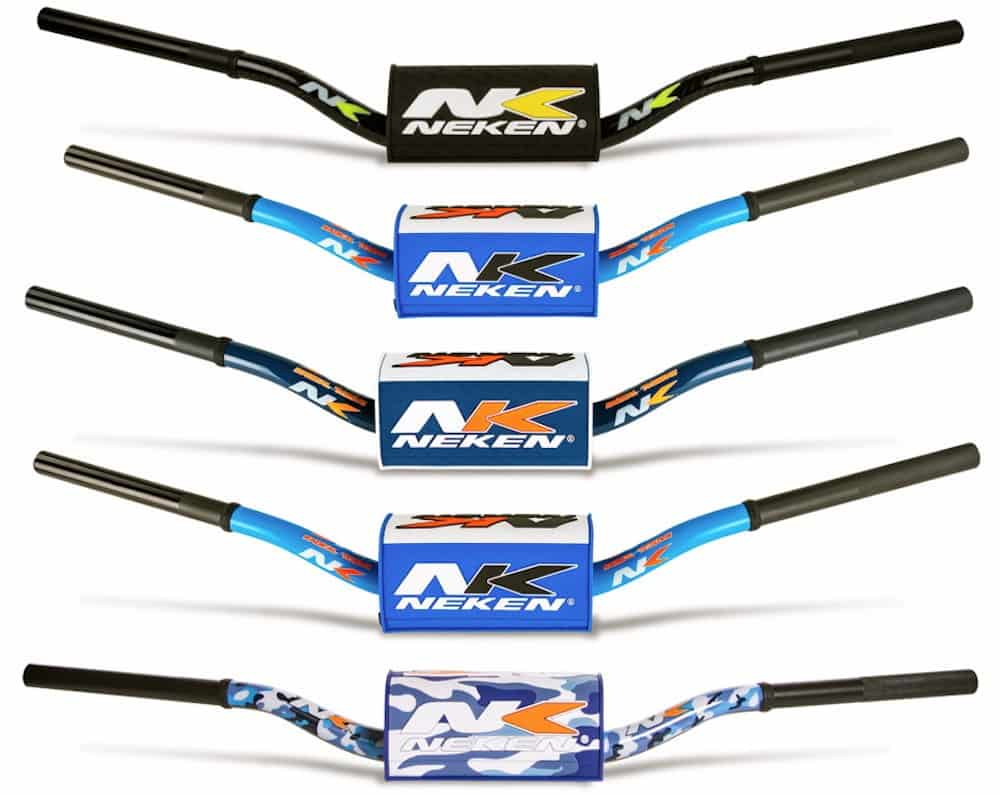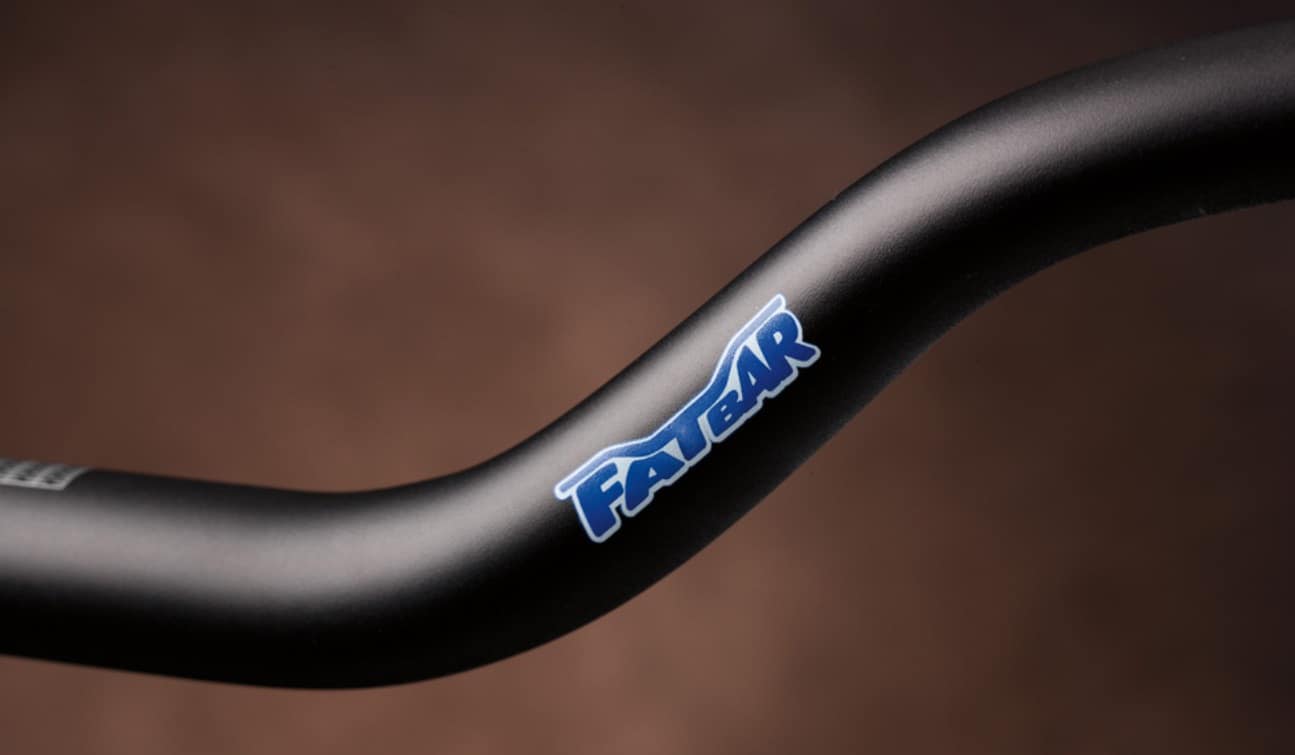TEN THINGS YOU NEED TO KNOW ABOUT HANDLEBARS

(1) Flex. When designing a handlebar, engineers want to achieve both strength and flexibility. Aluminum has replaced chromoly steel as the material of choice because engineers can design an aluminum bar of equal strength that’s more flexible and one-third the weight of a steel bar. Handlebars are also tempered for even more strength, at no cost to flexibility.

(2) 7000-series. The most popular grade of aluminum for handlebars is 2014, but some manufacturers use 7000-series aluminum. 7075 is the strongest commercially available grade of aluminum, but 7010 and 7050 grades have better fracture toughness. The higher grades of aluminum have better processing, but they all have similar yield strength and ultimate strength.

(3) Crossbar. A 7/8-inch diameter tube isn’t strong enough for a handlebar. To achieve the necessary strength, a crossbar is used. Steel bars can employ a welded crossbar, but welding would compromise the strength of an aluminum bar, so its crossbars are clamped on. Crossbars support the handlebars in the up/down directions, but are ineffective in the forward/backward directions.

(4) Swaging. The best way to increase the strength of a bar is to increase the diameter. But, since grip and control sections must be 7/8 inches, the bars must be tapered. Typical oversize bars are 1-1/8 inches, but Easton made a 1-3/8-inch bar (above). To get down to 7/8 of an inch, the oversize tubes are swaged by being forced through a die. After this process, the walls are thicker at the smaller-diameter ends. Thus, many bar manufacturers manipulate the wall thickness to feed more flex toward the end of the tapered bar.

(5) Stiffest. The stiffest bar design is a 1-1/8-inch bar with a crossbar, followed by super-size bars like Easton. Next stiffest is a 1-1/8 bar without a crossbar. The most flexible bar is a traditional 7/8-inch bar with a crossbar.
(6) Anodizing. Some old school steel bars are powder-coated, while most modern aluminum bars are anodized to prevent corrosion. At the ends of the bar, the coating is equally applied, inside and out. But towards the middle of the bar, the anodizing gets thinner and thinner on the inside. So, it’s important to keep water and contaminates out of the inside of the bar. Use plugs on the bar ends and be careful with the pressure washer. Some bars, like Renthal, have internal plugs a couple inches from the end, which prevents the owner from removing them.
(7) Rise. There are four measurements describing the bend of handlebars. The width is measured end-to-end and is typically 800mm (31.5 inches) for the majority of bars. Height is the vertical distance from the clamping level to the bar ends. Much of the overall height is achieved with a steep bend close to the clamps. This distance is called “rise.” Handlebars bent to different rises and heights have the same strength, so choosing between taller bars and taller clamps is a matter of personal preference. Sweep or pullback is the horizontal distance from the center of the clamping surface to the end of the bars rearward. A high number will make your bike feel like a beach cruiser.

(8) Tension. When mounting handlebars, the clamps and bars should be clean and smooth. The bolts must be tightened evenly. If one side is bottomed out and the other is not, it can create an oblong clamping surface on the round handlebar.
 This Mika bar uses oversize tubing, but is swaged down to fit in 7/8th inch bar mounts.
This Mika bar uses oversize tubing, but is swaged down to fit in 7/8th inch bar mounts.
(9) Straightening. Never try to fix a bent aluminum bar by bending it back to its original shape. Once bent past the yield point, the bar will have a stress riser that will eventually give way. The same holds true for steel, although steel has much better fatigue properties and can withstand more bending before failure.

The Neken SFH handlebar is swaged down on the ends of allow the use of grips that are twice as thick as a normal grip (without have a great outside diameter than a normal grip).
(10) Nicks. Technically, any nick on the outside of a handlebar can create a weak point. Always using soft tie-style tie-downs when transporting a bike and avoiding collisions with flying rocks is ideal, but unrealistic. Modern handlebars can withstand some abuse, but the aluminum is susceptible to deterioration. Even if there are no obvious signs of wear, it’s a good idea to replace your bars after a couple full seasons. If a handlebar is exposed to temperatures of 350 to 400 degrees, the heat treatment will be compromised (so don’t let your bike catch on fire or be ridden on the sun).






Comments are closed.